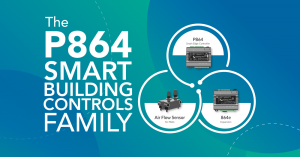National Indoor Air Quality Awareness Month
The Importance of Maintaining High Indoor Environmental Quality
October is National Indoor Air Quality Awareness Month. A great reminder of the importance of clean, quality air in any indoor environment.
Indoor Air Quality. It’s an essential factor we must consider in all environments and spaces; however it can often be overlooked. Exposure to poor indoor air quality can lead to adverse health effects. Ensuring the health of occupants within a workplace is more crucial than ever, making this October especially important for raising awareness and assisting organisations with ways to improve their indoor air quality.
If you run a business or own a building, you most likely understand the importance of providing comfortable and clean air conditions and the impact that has on those within these spaces.
Why focus on indoor air quality?
It leads to happier and more productive staff
The average human spends a majority of their time indoors. Especially with COVID-19, people are spending increasingly more time indoors. Indoor air quality plays a vital role in our health and wellness, and is associated with many benefits. One of the key benefits is the impact on human health.
Improving the quality of the air in your indoor environment means your occupants are comfortable, safe and able to perform at their best. Simply put – happy & healthy staff means better work output!
Demonstrates commitment to staff health
Ensuring the right amount of clean airflow is distributed to the proper number of people, gives occupants greater clarity to work more productively. It has been proven that poor air quality can cause headaches, loss of focus or even sickness.
By recognising and acting on the importance of clean indoor air, your organisation is demonstrating a commendable and caring commitment to ensuring your occupants are healthy.
What contributes to bad air quality?
- Build up of dust
- Poor ventilation
- Too many people and not enough air flow
- Mold
- Infrequent cleaning schedules
Now is the perfect time for you to examine your current indoor air environment and consider ways that you can improve it. Here are some ideas to help you get a leg up on improving air quality.
Ways to improve building air quality
1. Integrate space utilization techniques
Integrating space utilization into your buildings’ Building Management System (BMS), means you can accurately measure the number of occupants within your space. This data works with your building’s HVAC system to ensure the right amount of air is being distributed to the correct number of people.
2. Data Management
One key way to improved air quality is by collecting and aggregating data so building owners, facility managers or even the tenants can take full control over their indoor air quality. Good systems provide one interface that deep dive so you can gain a clearer understanding into optimising strategies. It fuels future strategies so you know exactly what need, when you need it.
The Optergy system provides real time data which allows the vested parties to make informed decisions resulting in positive outcomes for everyone involved in the building environment.
3. Regularly check air filters
You’ve probably seen what an unchecked air filter can look like if not properly maintained. It’s recommended that you change the air filters every few months to ensure that clean air can pass through into the building. Keeping on top of your air filters means your occupants are receiving the necessary air they need to perform at their best.
The Optergy P864-VAV controller has built in airflow sensors that can be used to monitor when a filter is dirty and automatically notify the correct team member when that filter needs to be changed. This is a quick and simple way to ensure that you always have clean filters in your building.
4. NABERS Indoor Environment (IE) rating
When it comes to indoor environment, NABERS is a shining guide. The NABERS IE rating system allows building owners to measure their building’s indoor air quality, lighting, acoustic quality, temperature and thermal comfort. Using the NABERS rating scheme gives you a greater understanding of the factors that impact on your building’s performance. This strategic insight allows you to take action while it’s still relevant in order to improve your indoor air quality enhancement measures that drives tenant satisfaction and productivity.
Optergy has created an Indoor Environment Quality (IEQ) reporting tool that can simplify the reporting process to ensure your building is performing at its best. The IEQ tool is designed to simplify the NABERS reporting process, with a user-friendly reporting interface and module tools, which reports humidity, air speed, and temperature in accordance with NABERS IE guidelines.
Optergy strives to meet your health, safety and building optimisation goals while improving IEQ within the building ecosystem. Now is the time to take action against indoor air pollution and ensure your buildings are running efficiently and sustainably.
Get in touch with us today to discover how you can enhance your indoor air quality and the health and the wellbeing of your occupants. There’s no better time to get started.




